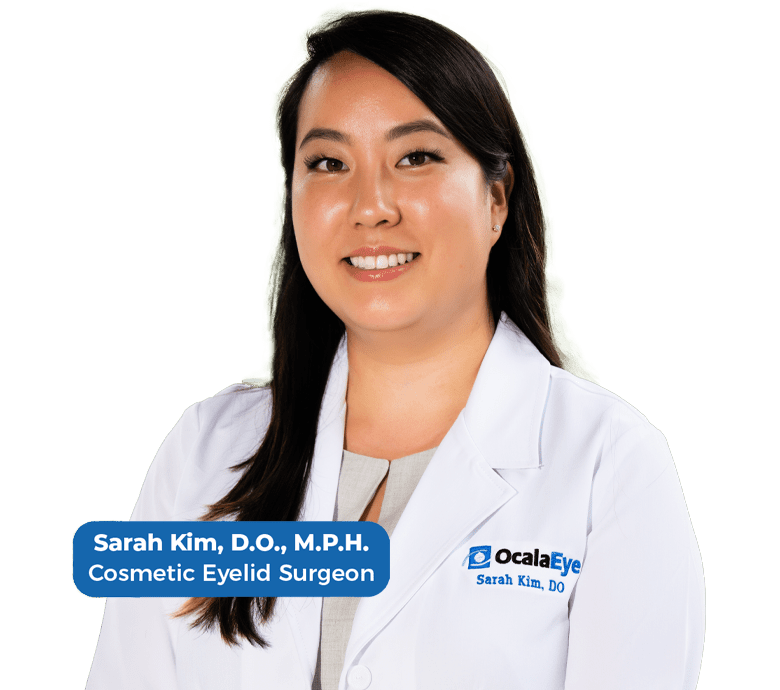Functional Eyelid Surgery
- What is functional eyelid surgery?
- Why would I need functional eyelid surgery?
- What are the different reasons for functional eyelid surgeries?
- Does insurance cover functional eyelid surgery?
- How do I know if I’m a candidate for functional eyelid surgery?
Eyelid surgery can be performed for cosmetic or functional purposes. While functional eyelid surgeries can still have cosmetic benefits, they aim to tackle the underlying infrastructure issues causing problems with your vision or how your eyes function.
What Is Functional Eyelid Surgery?
Functional eyelid surgeries are medically indicated to optimize the function and position of the eyelids. The eyelids are important structures that protect our eyes, clear debris, help lubricate our eyes, and open up our peripheral vision. Thus, when eyelid surgery becomes necessary for functional reasons, it is often covered by most medical insurance plans.
Whether you’re looking for cosmetic or functional eyelid surgery, make sure you have it done by an experienced eyelid surgeon like Ocala Eye’s oculoplastic surgeon, Dr. Sarah Kim.
Why Would I Need Functional Eyelid Surgery?
When the eyelid is not positioned or functioning properly, the health of your eye or clarity and scope of your vision may be compromised. Surgery may be required to correct your eyelid malposition or malfunction. A variety of issues can cause these problems to your eyelids but the most common reason is simply aging. Over time, our tissues become loose and begin to stretch, bulge and droop. The fat around our eyes begins to bulge, the skin and muscle droop down from gravity, the upper lids sag over our eyes and sometimes the lower lids roll into or away from our eyes.
While aging is the most common reason for our eyelid changes, other reasons include genetics, medical conditions, and trauma that can occur at birth or later in life. Read below about the different kinds of functional eyelid surgeries to find out more.
What are the Different Reasons for Functional Eyelid Surgeries?
Here is a list of issues and diagnoses that lead to eyelid surgeries or procedures at Ocala Eye.
Heavy, sagging skin of Upper Lids: Dermatochalasis
The skin can stretch and begin to sag onto or over your lashes, causing loss of brightness and peripheral vision. A blepharoplasty is a surgery that removes the excess weight from the eyelid and helps to widen your vision.
Heavy, drooping, “sleepy” Upper Lids: Ptosis
When the eyelid muscle is weakened, the eyelid sits lower over the eye and can start to cover the pupil and block vision. People often note that they’re told they look sleepy all the time. Ptosis repair, tightening of a specific muscle within the eyelid, can help elevate the lid and open up the eye again.
Heavy brow: Brow ptosis
Over time and with gravity, our forehead sags and the brows put weight on the upper eyelids causing peripheral vision loss. If this happens, a brow lift may be deemed medically necessary.
Eyelid rolls out: Ectropion
This is a condition where the lower (rarely upper) eyelid turns outward, exposing the eyeball and inner surface of the eyelid. An ectropion repair usually requires tightening of the lid to correct its position.
Eyelid rolls into your eye: Entropion
This is a condition where the lower (rarely upper) eyelid turns inward so the eyelashes rub against your eyeball. An entropion repair usually requires tightening of the lid to correct its position.
Can’t close your eye: Lagophthalmos
Often due to Bell’s Palsy, stroke or trauma, this occurs due to muscle weakness or paralysis caused by damage to the facial nerve. There are various surgical options, often including inserting a gold or platinum weight into your eyelid to help weigh it down, and weakening or tightening certain structures.
Eyelids open too much, appear “bug-eyed” or scared: Lid retraction
This can occur due to Thyroid Eye Disease, history of cosmetic eyelid surgery, or other medical conditions. Surgery should be individualized and can involve weakening a muscle, releasing scar tissue or tightening the lid.
Eyes are bulging due to thyroid disorder: Exophthalmos, Thyroid Eye Disease
Thyroid imbalance, most often Graves Disease, causes changes in the tissues around your eyes that make your eyes bulge forward and become inflamed. Firstly, your thyroid condition should be optimally managed by your primary care provider or endocrinologist. You should also have a complete dilated eye examination and possibly other eye tests to make sure your vision is not compromised. Imaging of your orbits, such as an MRI or CT scan, should be obtained to assess the severity of the tissue changes. You will need an evaluation to see if you are a candidate for medical or surgical treatment.
Red, swollen bump on eyelid: Chalazion or Hordeolum
These occur due to inflamed or infected oil glands in your eyelid. They can have discharge and some are painful. These are often called eyelid “styes.” These can be treated medically, or surgically if severe or chronic.
Irritating eyelid growths: Moles, skin tags, warts, cysts
Benign but annoying, these can grow around your eyelids and sometimes start to touch your eye, cause irritation or block your vision. These can be removed by a quick outpatient procedure.
Suspicious growth: Skin Cancer
Skin cancers can grow anywhere on your body, including around your eyes. If you’re not sure if it’s cancer, already know it is skin cancer or have had a skin cancer removed and need reconstruction, schedule a consultation now.
Eyelashes turning in: Trichiasis
This can be due to chronic inflammation or irritation around the eyes, medications or medical conditions. When the lashes rub or poke the eye it can be extremely annoying and even painful. There are several options for treatment, including manually plucking, electroablation, or surgery.
Eyelid twitching/spasm: Blepharospasm
This is a rare condition that causes involuntary muscle spasms and twitching around the eyes. Some cases can be severe enough to impair your functional vision and interfere with your activities. This can be treated in the office with small injections into your eyelid and facial muscles with a neuromodulator (such as Botox, Dysport or Xeomin).
The team at Ocala Eye are experienced in treating eye conditions, both those that require functional eyelid surgery and those that do not. Call us today for a consultation.
Does Insurance Cover Functional Eyelid Surgery?
If your eyelid surgery is medically necessary, your medical insurance provider may cover all or part of the procedure. Additional testing may be required prior to surgery. Talk with your eye doctor or surgeon about the steps necessary to determine if your eyelid surgery is functional or cosmetic. You can also call your insurance provider directly to talk about what is covered by your individual plan.
How Do I Know if I’m a Candidate for Functional Eyelid Surgery?
You will need an eyelid consultation with our oculoplastic surgeon, Dr. Sarah Kim. She will perform a thorough evaluation and inform you whether you are a candidate for eyelid surgery. For certain functional eyelid surgeries, further testing to prove you are a candidate may be required by your medical insurance provider. It is important to note that you should be in good health in order to proceed with surgery.
Contact the team at Ocala Eye to talk about functional or cosmetic eyelid surgery and other options available to you. We’re here to help you with the best and most effective treatments for a lifetime of good vision.
Consult an Ophthalmologist
We at Ocala Eye dedicate ourselves to helping your vision last a lifetime, which is why we offer comprehensive eye care.
When you visit with an ophthalmologist at our Ocala, Florida offices, your individual case will be discussed and assessed at length. We will then determine which vision correction procedure is best for you.


